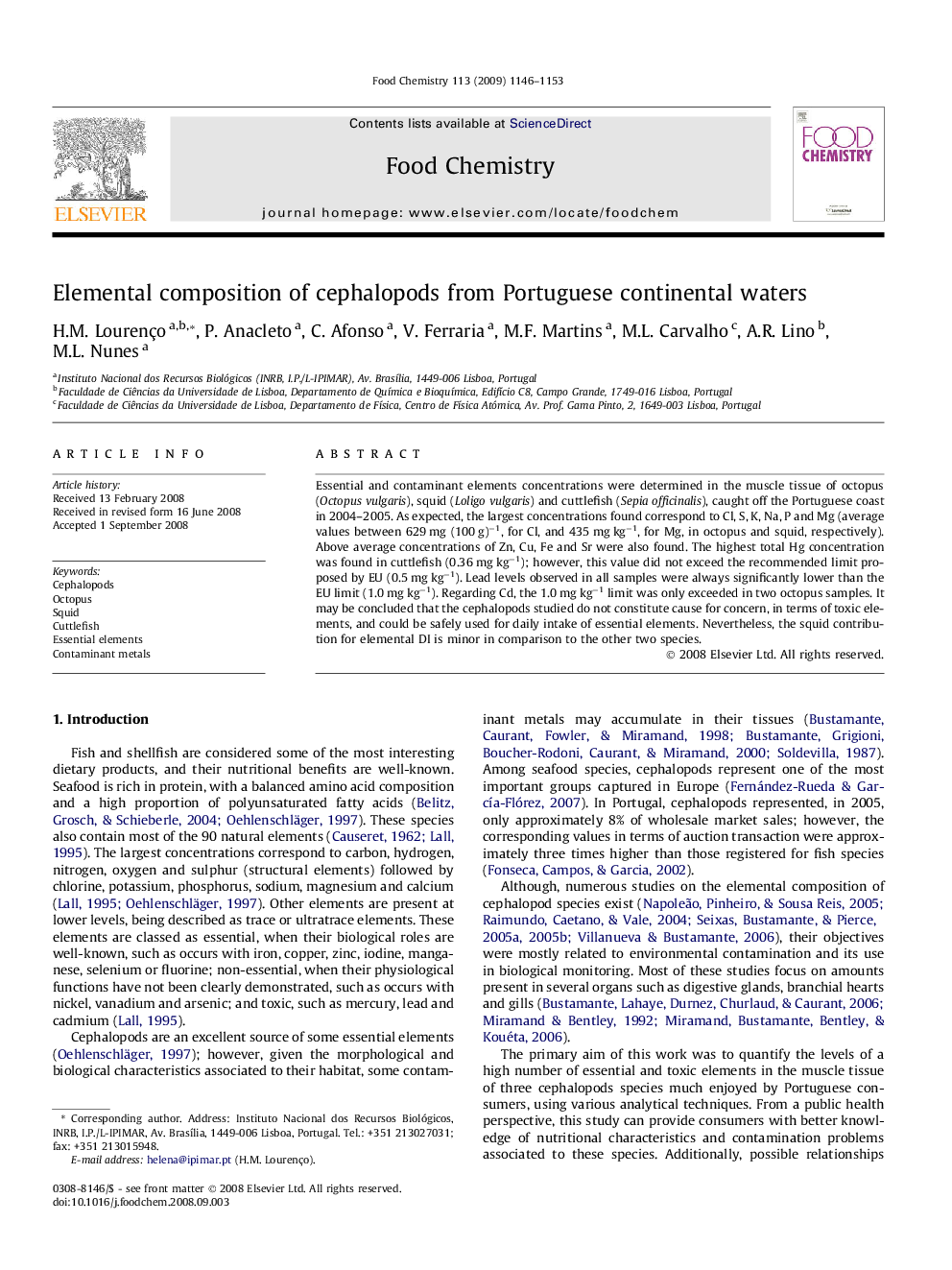| Article ID | Journal | Published Year | Pages | File Type |
|---|---|---|---|---|
| 1188973 | Food Chemistry | 2009 | 8 Pages |
Essential and contaminant elements concentrations were determined in the muscle tissue of octopus (Octopus vulgaris), squid (Loligo vulgaris) and cuttlefish (Sepia officinalis), caught off the Portuguese coast in 2004–2005. As expected, the largest concentrations found correspond to Cl, S, K, Na, P and Mg (average values between 629 mg (100 g)−1, for Cl, and 435 mg kg−1, for Mg, in octopus and squid, respectively). Above average concentrations of Zn, Cu, Fe and Sr were also found. The highest total Hg concentration was found in cuttlefish (0.36 mg kg−1); however, this value did not exceed the recommended limit proposed by EU (0.5 mg kg−1). Lead levels observed in all samples were always significantly lower than the EU limit (1.0 mg kg−1). Regarding Cd, the 1.0 mg kg−1 limit was only exceeded in two octopus samples. It may be concluded that the cephalopods studied do not constitute cause for concern, in terms of toxic elements, and could be safely used for daily intake of essential elements. Nevertheless, the squid contribution for elemental DI is minor in comparison to the other two species.
